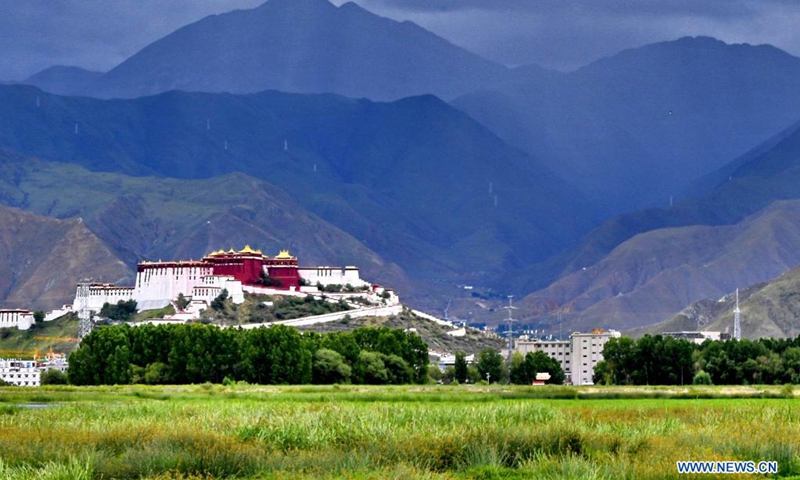ARTS / CULTURE & LEISURE
Digital archiving used to preserve Tibetan manuscripts

The Potala Palace is seen near the Lhalu wetland national nature reserve in Lhasa, southwest China's Tibet Autonomous Region, July 17, 2021.(Photo: Xinhua)
Preservation of ancient palm-leaf manuscripts collected in Lhasa's Potala Palace in Southwest China's Tibet Autonomous Region has entered the digital archiving phase, the cultural relics research office of the Potala Palace announced on Sunday.
With a total of 29,380 leaves, the Potala Palace has the largest collection of palm-leaf manuscripts in China. A plan to take inventory of and protect the manuscripts was kicked off in May 2020, China News reported on Sunday.
As the name indicates, palm-leaf manuscripts are made from dried palm leaves. The use of such leaves for writing dates back to the 5th century BC and continued until the 19th century, when printing presses replaced hand-written manuscripts.
The palm-leaf manuscript collection at the Potala Palace covers a large number of Buddhist subjects.
Efforts to protect Buddhist manuscripts overseas began in the 20th century, with China beginning to collect these valuable cultural relics in the 1960s. The project poses a high level of difficulty as the languages involved cover Sanskrit, Tibetan, Chinese and English.
The main threat to these cultural relics is bacterial damage and mildew. Fortunately, the climate on the Tibetan plateau helps keep such occurrences low.
Starting in 2019, Chinese officials arranged to invest a total of 300 million yuan ($46.9 million) over 10 years to carry out the country's largest project to protect the ancient books and documents in the Potala Palace.
Since the project was launched more than a year ago, the project team has completed an investigation into these ancient manuscript's production materials, technology, protection and restoration both in China and overseas.
Meanwhile, hyper-spectral data scanning and high-definition digital image acquisition have been carried out.
In the next stage of the project, the team will complete digital archiving of all the palm-leaf manuscripts, and carry out the traditional craftsmanship research work, but the most difficult part will be cleaning the manuscripts.
